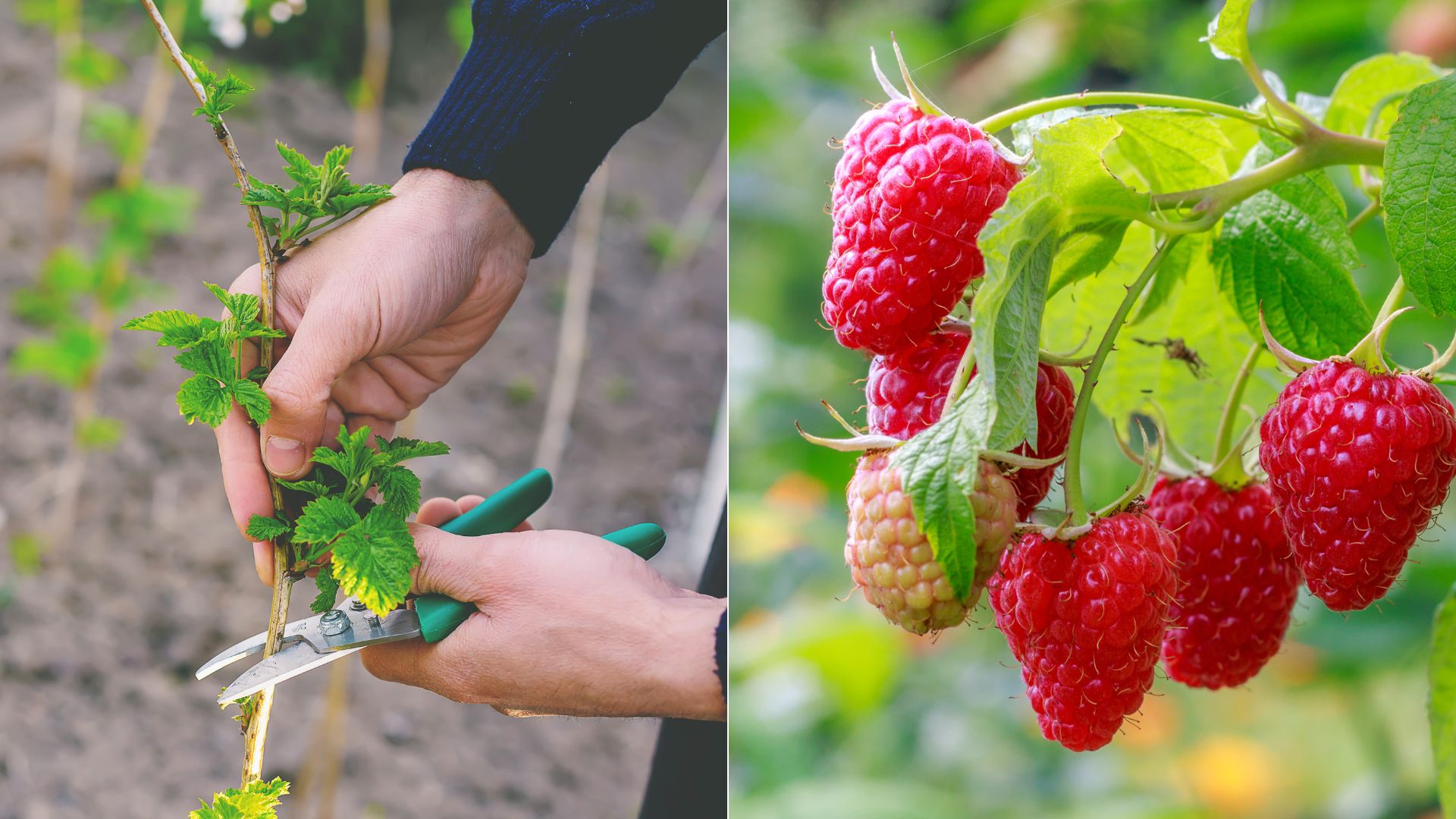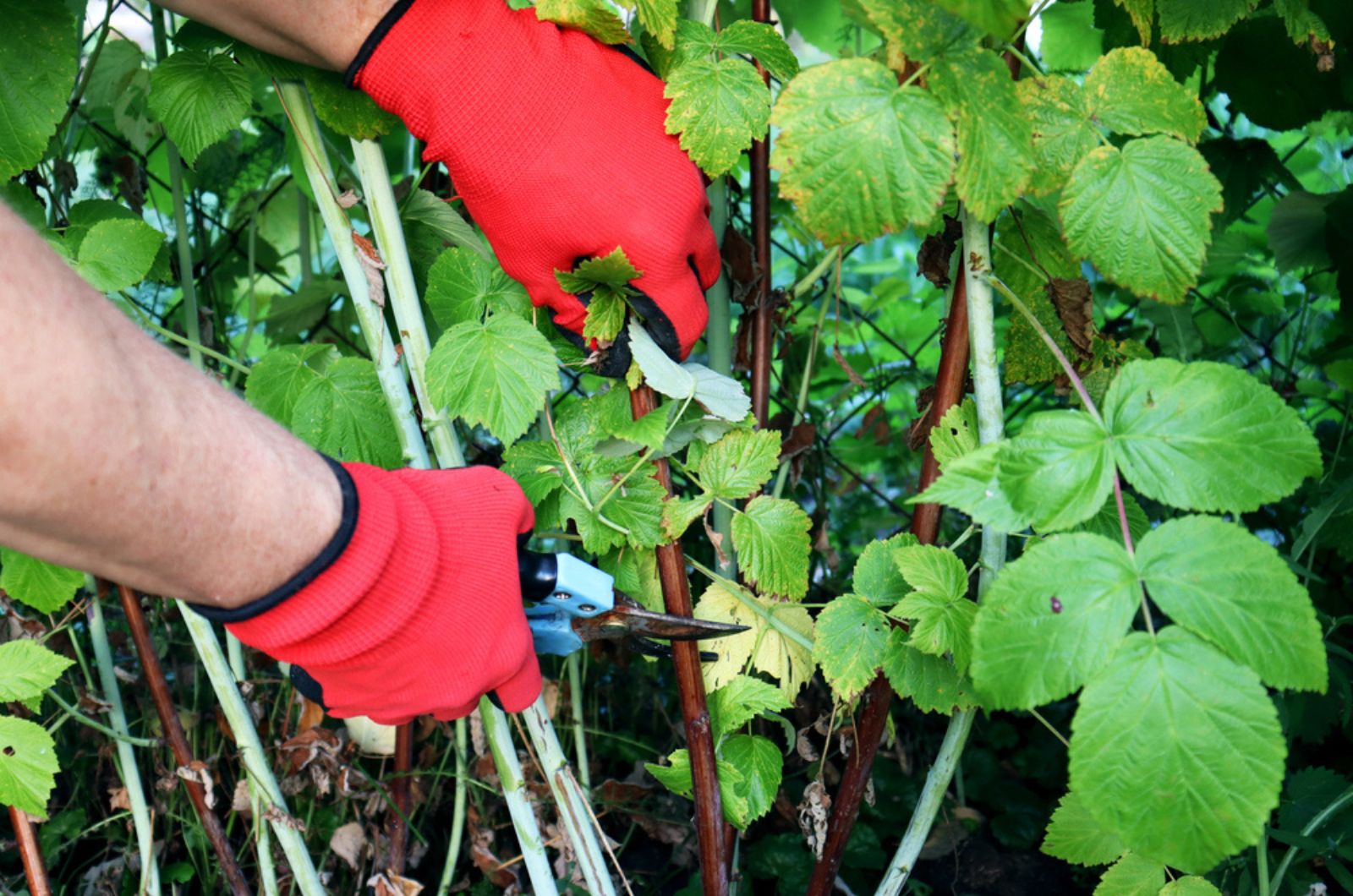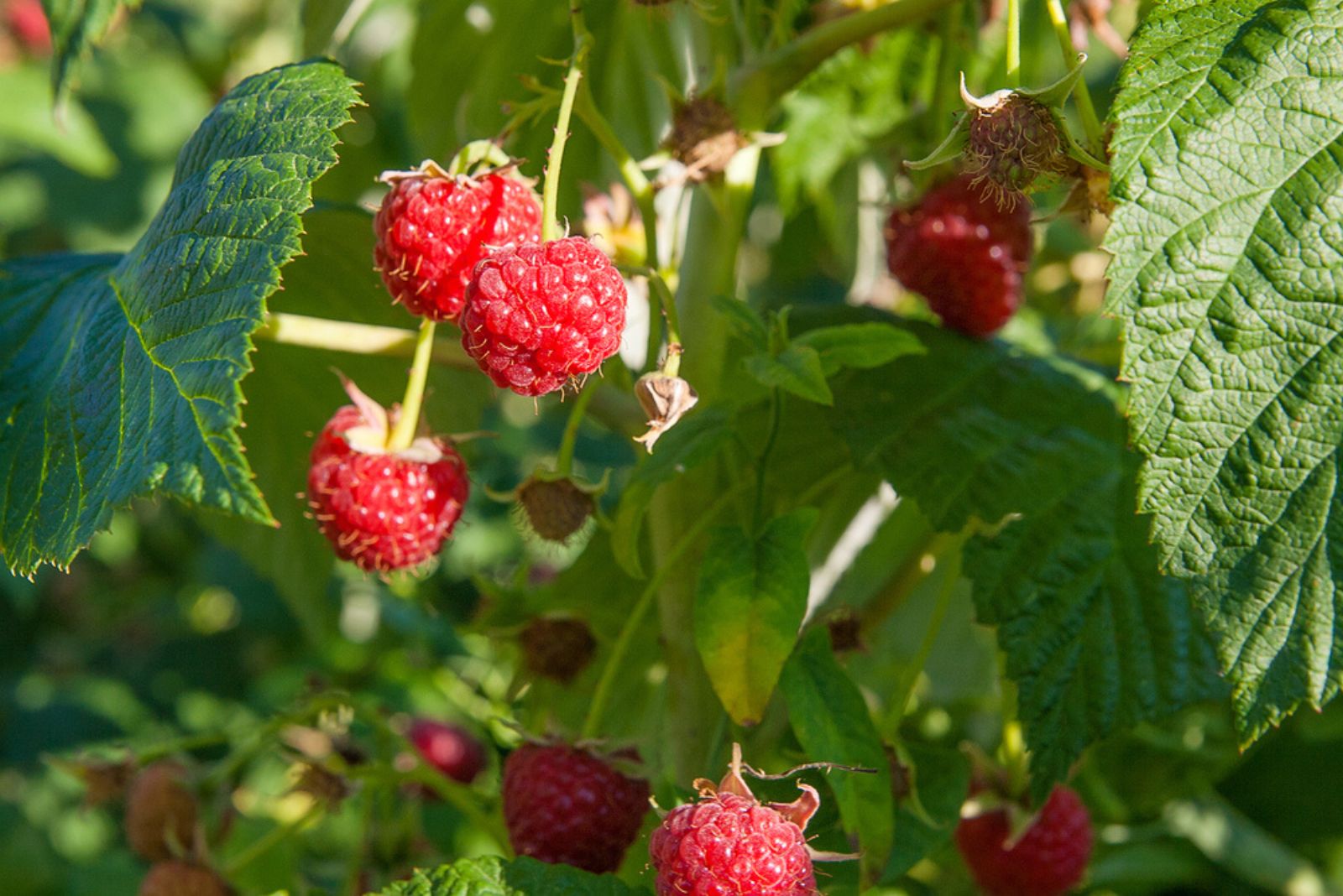The flavor of homegrown raspberries is simply unbeatable. Many growers decide on these fruiting plants because they aren’t really finicky over the growing conditions.
However, if you’re a beginner and want to add these berries to your garden, you should know that they also require trimming for healthy growth. That’s actually one of the essential aspects of their care.
But don’t worry; I’ll show you when to prune raspberries and the best ways to do it.
Let’s get started!
Summer-bearing vs Fall-Bearing Raspberries
Before I go any further, I should discuss an essential thing regarding raspberry plants. There are two types of these berries: summer-bearing and fall-bearing. You must know the difference because both types need pruning at different times.
Luckily, it isn’t hard to determine the type. Two main factors are the season in which they produce fruits and the fruit size.
So, summer-bearing raspberries grow larger and require a lot of space for healthy development. They start their fruiting season in early summer and finish in late summer.
On the other hand, fall-bearing raspberries are smaller, which is why growers frequently decide on planting them in containers, especially if there’s not enough space available.
As far as the fruiting season is concerned, you can enjoy these berries from late summer through fall.
Have you figured out which type of raspberry you have? Let’s see how to prune them!
Pruning Summer-Bearing Raspberries
You should start pruning these varieties when their fruiting season ends, i.e., in late summer or early fall.
Summer raspberries develop on canes that have been growing since the year before. They tend to get muddled and overcrowded, so you’ll need to do some trimming after fruiting to avoid this.
You should start with trimming the old and dead canes first. When you’re done, start removing older healthy canes until approximately five are left.
The main goal is to enhance nutrient absorption of the canes, which will result in robust growth.
I also recommend trimming the remaining canes to about 5 feet to encourage further development even more.
The only thing to pay attention to is not to prune new canes. You can simply determine which ones are new by observing the color and texture. They’re soft and green unlike the old canes, which are typically brown and woody.
Pruning Fall-bearing Raspberries
If your raspberries produce fruits in the fall, then you should prune them in the winter. They may look like they need pruning earlier but remember that they send shoots after pruning and the last frost may significantly damage them.
These plants typically finish their life cycle within one season. Just prune the bush’s canes down to the ground in the winter. They’ll start displaying new growth the following season.
What Happens If You Skip Pruning?
Generally speaking, raspberries are fruit vines that don’t require much to thrive. But the one thing you should never skip is pruning.
Their growth will be severely affected, as well as fruit production. Their stems, also known as floricanes, won’t generate new fruits no matter how well they performed last season.
In order to encourage new growth and get fruits the next season, we must remove old canes. If you leave these canes, you’re actually encouraging overcrowding. The floricanes will keep competing for the light so your raspberries will look more like weeds.
Additionally, the bottom foliage and buds of your raspberry plants won’t receive light and most likely die back. This will lead to fewer or no fruits at all, and that’s the last thing we want.
Pruning raspberries isn’t a hard task and brings so many benefits. Simply follow our guidelines to get the best yield you could possibly imagine. One more thing; more fruits mean more raspberry seeds you can extract and get even more plants!



